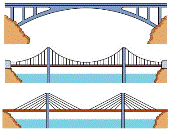Civil and Environmental Engineering, Department of

Department of Civil and Environmental Engineering: Faculty Publications
Document Type
Article
Date of this Version
10-14-2022
Citation
Hindawi Advances in Civil Engineering Volume 2022, Article ID 5456804, 9 pages https://doi.org/10.1155/2022/5456804
Abstract
Push-out-shear tests were used in this study to analyze lag screw connections in timber-concrete composite (TCC) slabs based on the embedment depth. The goal of this research is to look into the relationship between shear capacity and embedment depth in TCC, as well as to investigate the embedment strength of the wood. Experiments were carried out at different embedment depths (5.08 cm, 7.0 cm, and 8.9 cm). The prepared samples were examined in order to determine the failure modes and provide an accurate assessment of the influence of embedment depth on TCC slabs. The investigation on the embedment strength of the wood was performed then for the analysis of the crushing of wood fibers, lag screw yielding strength, and maximum load applied at embedment depths of 6.6 cm and 7.0 cm. The results indicate that between 5.08 cm and 7.0 cm, there was an apparent improvement in the relationship between embedment depth (ED) and shear capacity of TCC slabs in terms of the shear strength, while a significant difference was observed between 7.0 cm and 8.9 cm. The study suggests that the ED of the TCC slab should be maintained at around 7.33 times the diameter of the lag screw.


Comments
Open access.